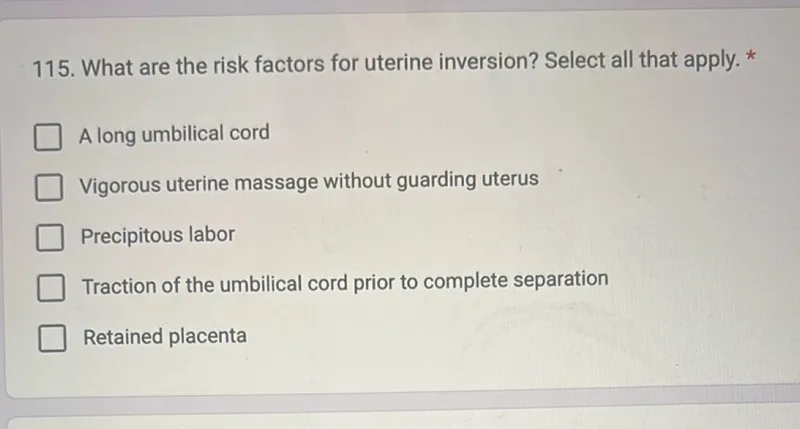Questions: 115. What are the risk factors for uterine inversion? Select all that apply. * A long umbilical cord Vigorous uterine massage without guarding uterus Precipitous labor Traction of the umbilical cord prior to complete separation Retained placenta

Transcript text: 115. What are the risk factors for uterine inversion? Select all that apply. *
A long umbilical cord
Vigorous uterine massage without guarding uterus
Precipitous labor
Traction of the umbilical cord prior to complete separation
Retained placenta





